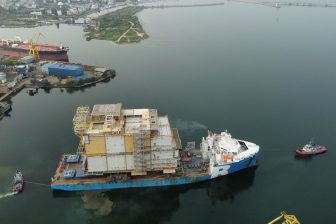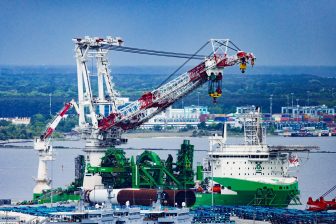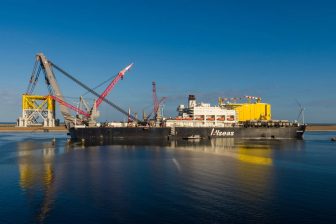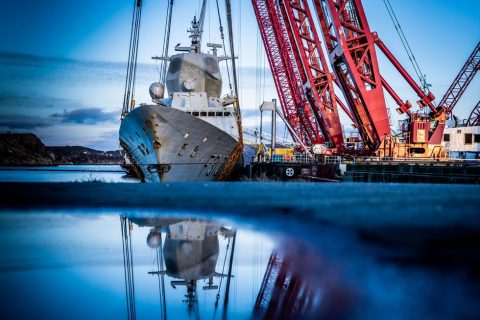
Scaldis salvaged Norwegian frigate with unique lift method
Scaldis has completed the salvage of the Norwegian frigate ‘KNM Helge Ingstad’ using a “unique double duo lift method” combining two heavy lift vessels with a total lifting capacity of 7,300 tonnes.
The Norwegian frigate sank on November 8th after colliding with tanker vessel ‘Sola TS’ in the vicinity of Bergen and got stuck on the inclined slope of a fjord. Eight people got injured in the accident, which also caused the temporary closure of a North Sea crude export terminal, Norway’s top gas processing plant, and several offshore fields.
The Norwegian marine contracted Scaldis, the Belgian subsidiary of DEME, Jan De Nul Group and Herbosch-Kiere, and BOA Offshore to salvage the shipwreck.
Unique lift method
Especially for this project, SCALDIS developed a revolutionary lift method by combining its two heavy lift vessels: ‘Rambiz’, equipped with two cranes and a total lifting capacity of 3,300 tonnes, and the new heavy lift vessel ‘Gulliver’, also with two cranes and a total lifting capacity of 4,000 tonnes. With this unique “Double Duo Lift” method, SCALDIS has a combined total lifting capacity of 7,300 tonnes at its disposal.
The four synchronous functioning cranes made it possible to lift the 133-meter long and 5,500-tonne heavy frigate in one piece and to move it into a horizontal position in one continuous operation.
Submersible pontoon
Missiles and fuel were removed from the frigate during the winter months while divers installed 16 hoisting chains under the wreck to be able to lift the ship out of the water.
To lift the frigate safely and completely out of the water, it was transported while hanging from the crane hooks of the heavy lift vessels to the nearest port, where it was placed on a submersible pontoon. This partially submerged pontoon was subsequently de-ballasted, allowing it to re-emerge above the waterline while supporting the ‘Helge Ingstad’ at its centre. During this operation, the hoisting cranes stabilised the ship until all sea-fastenings had been secured for subsequent transport.
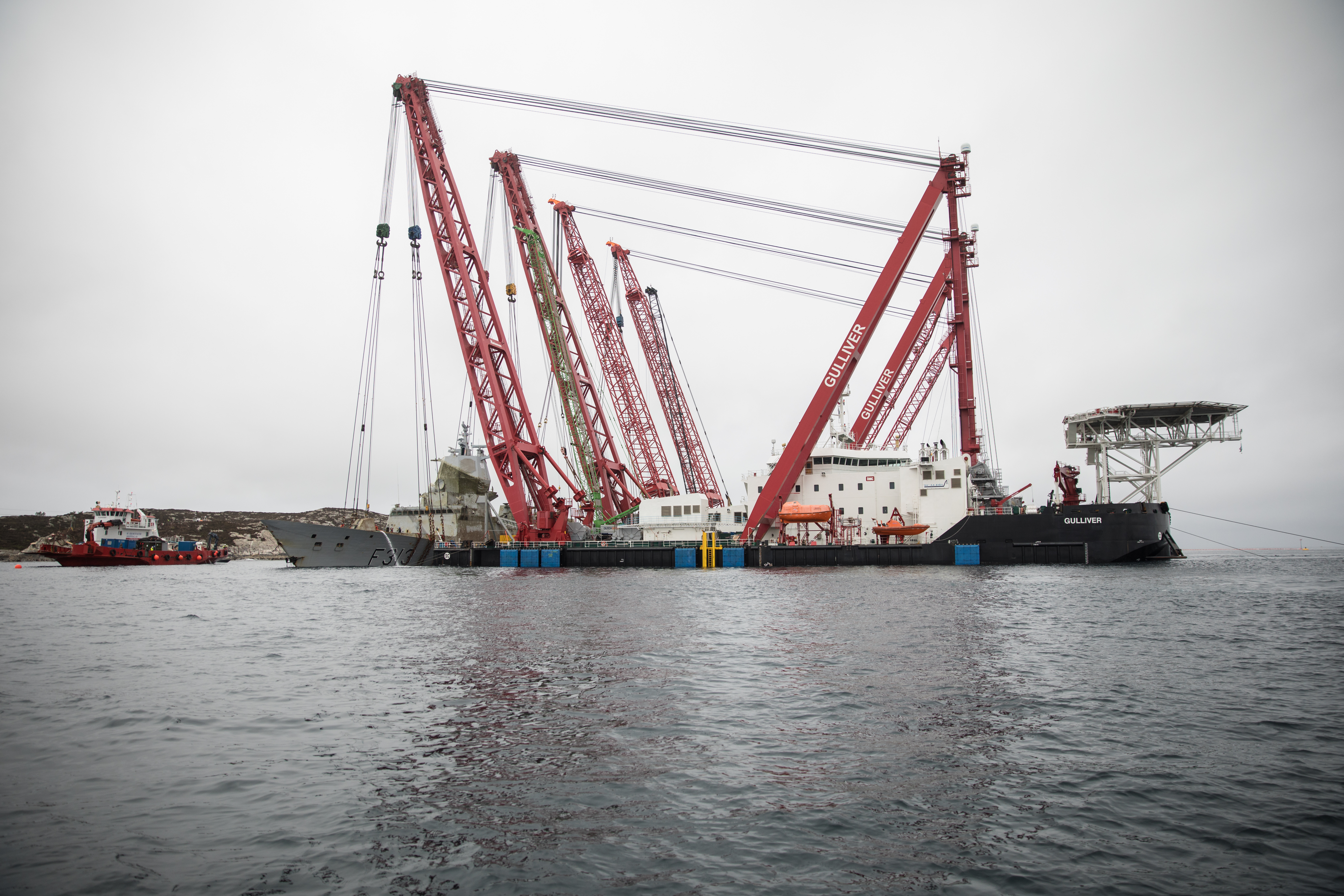
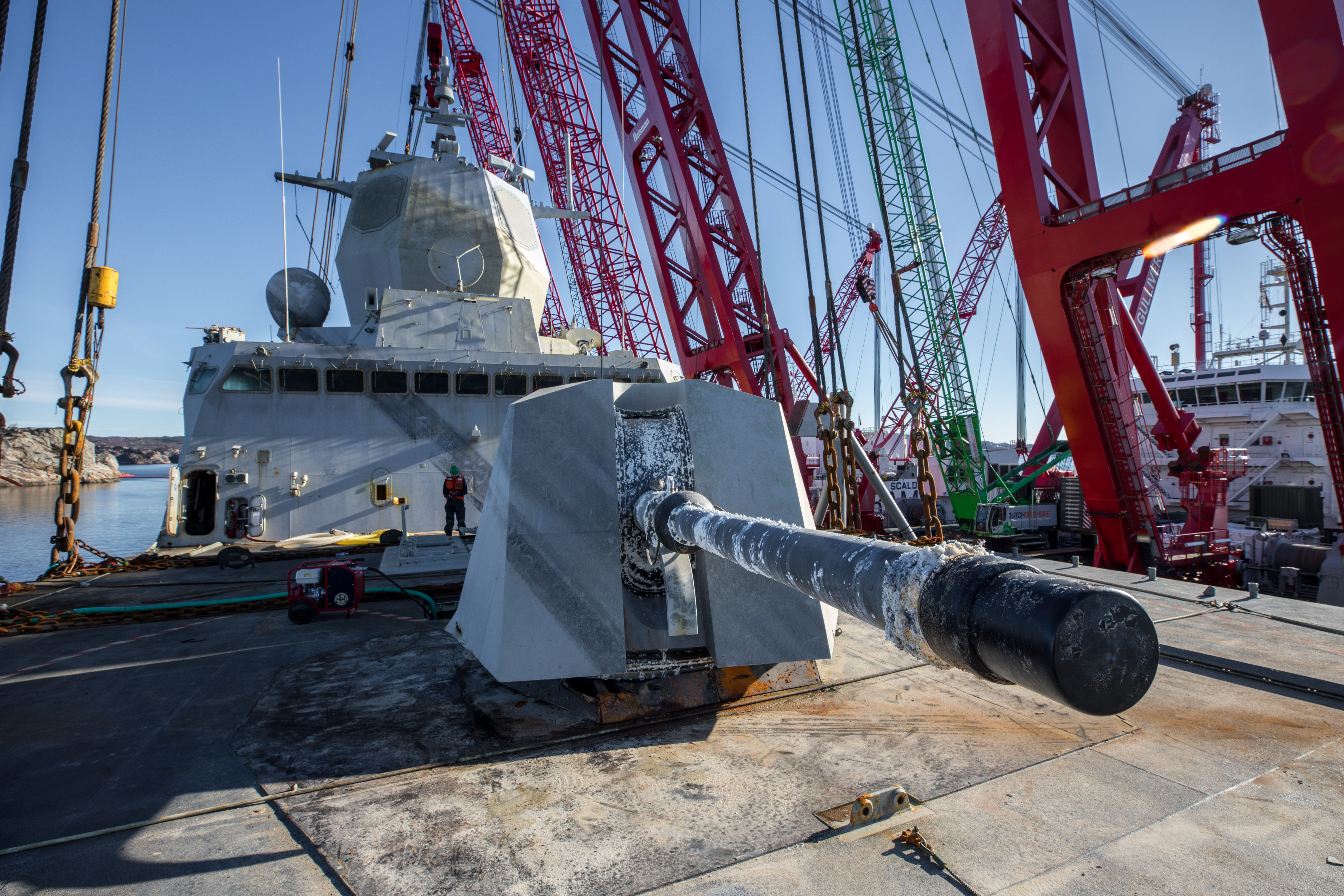
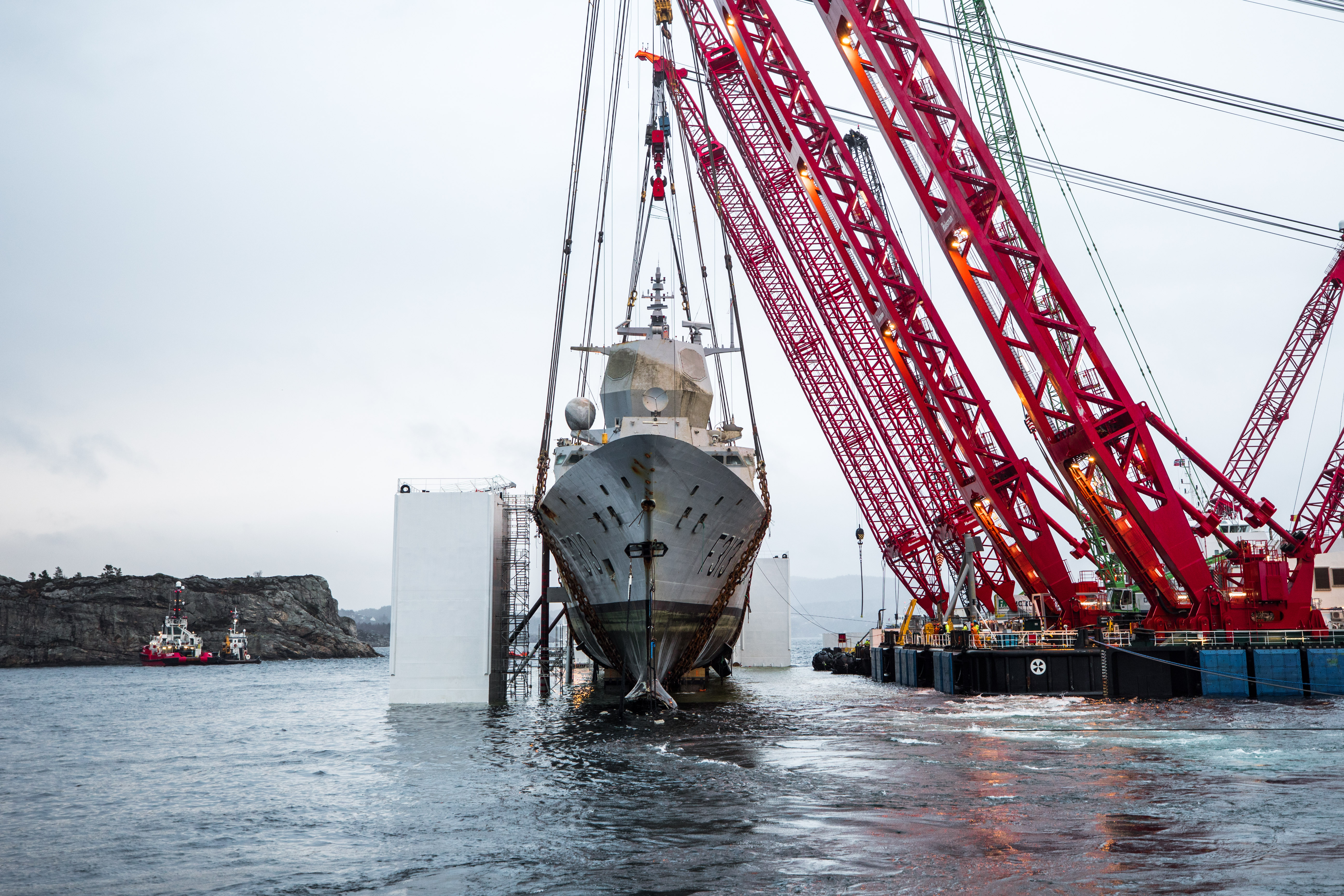
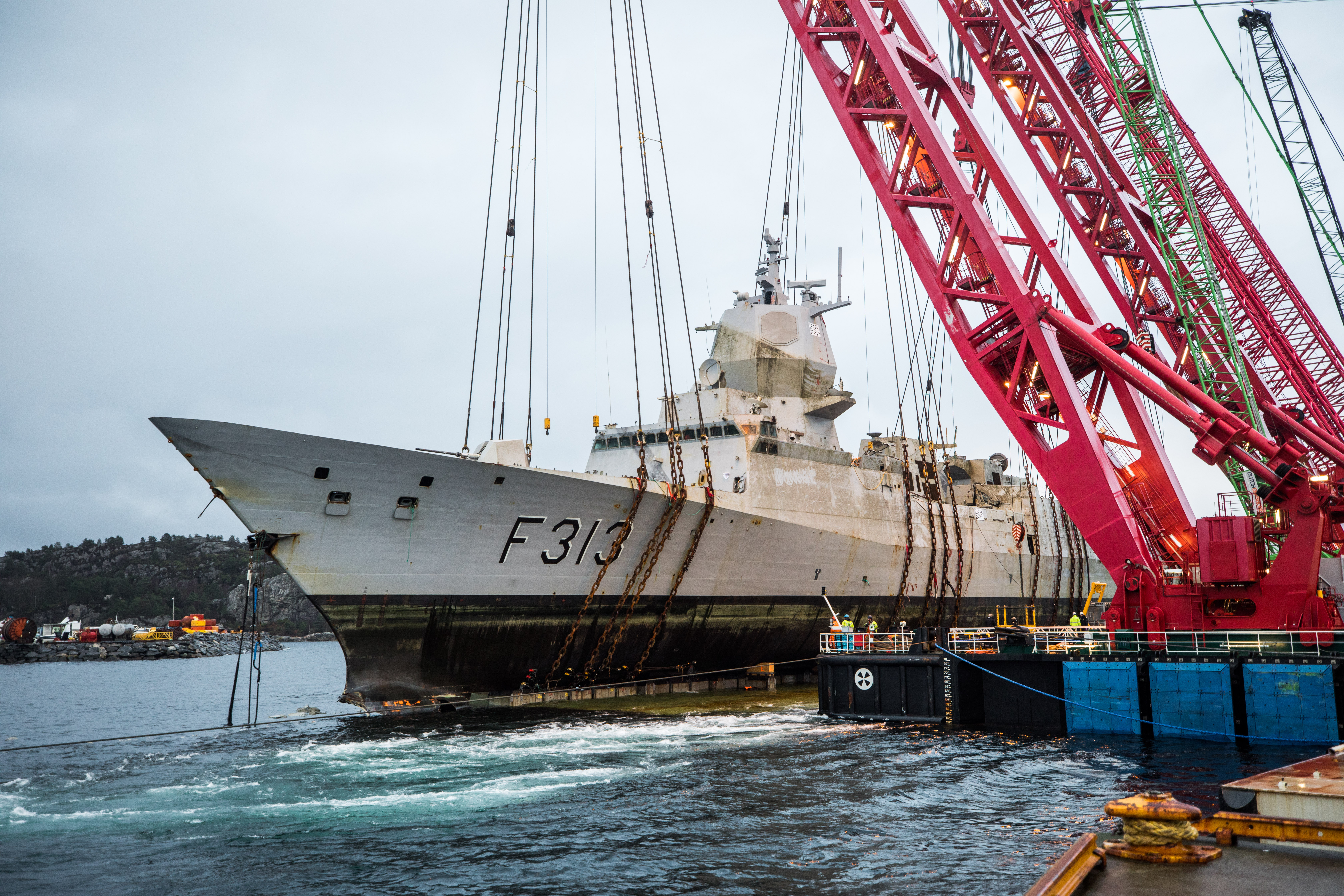
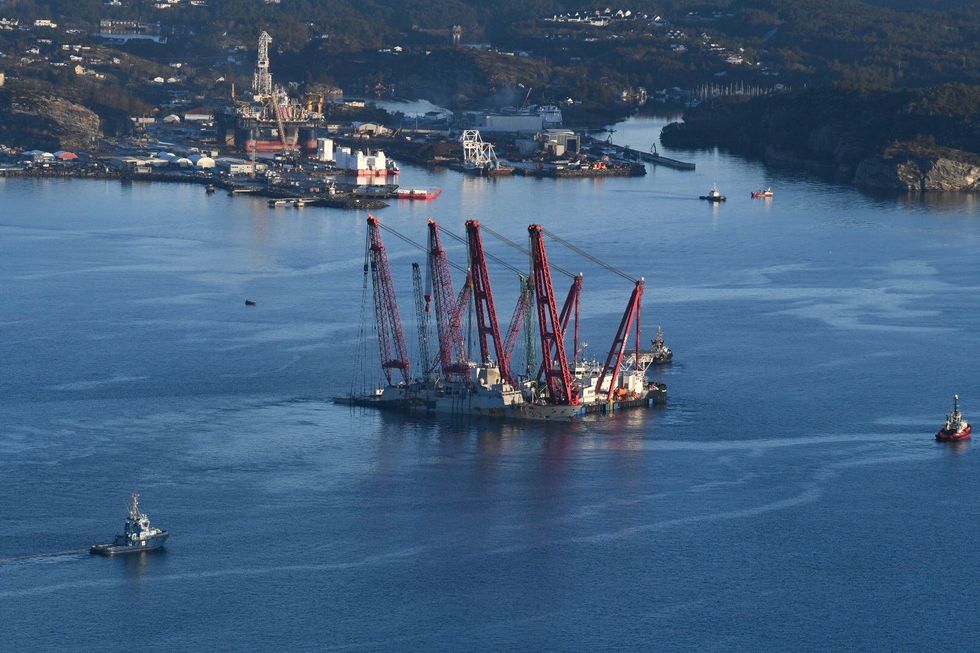
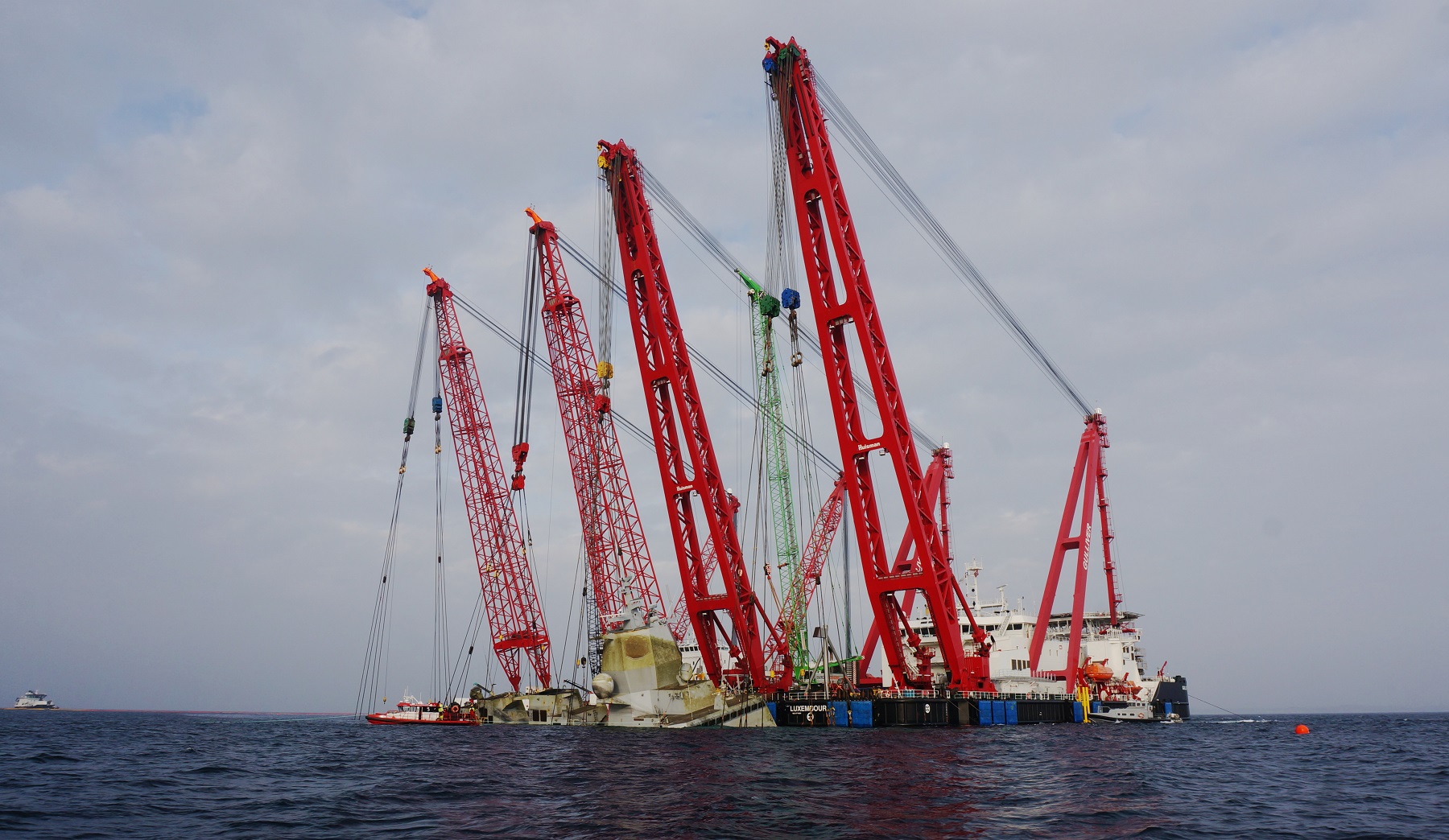
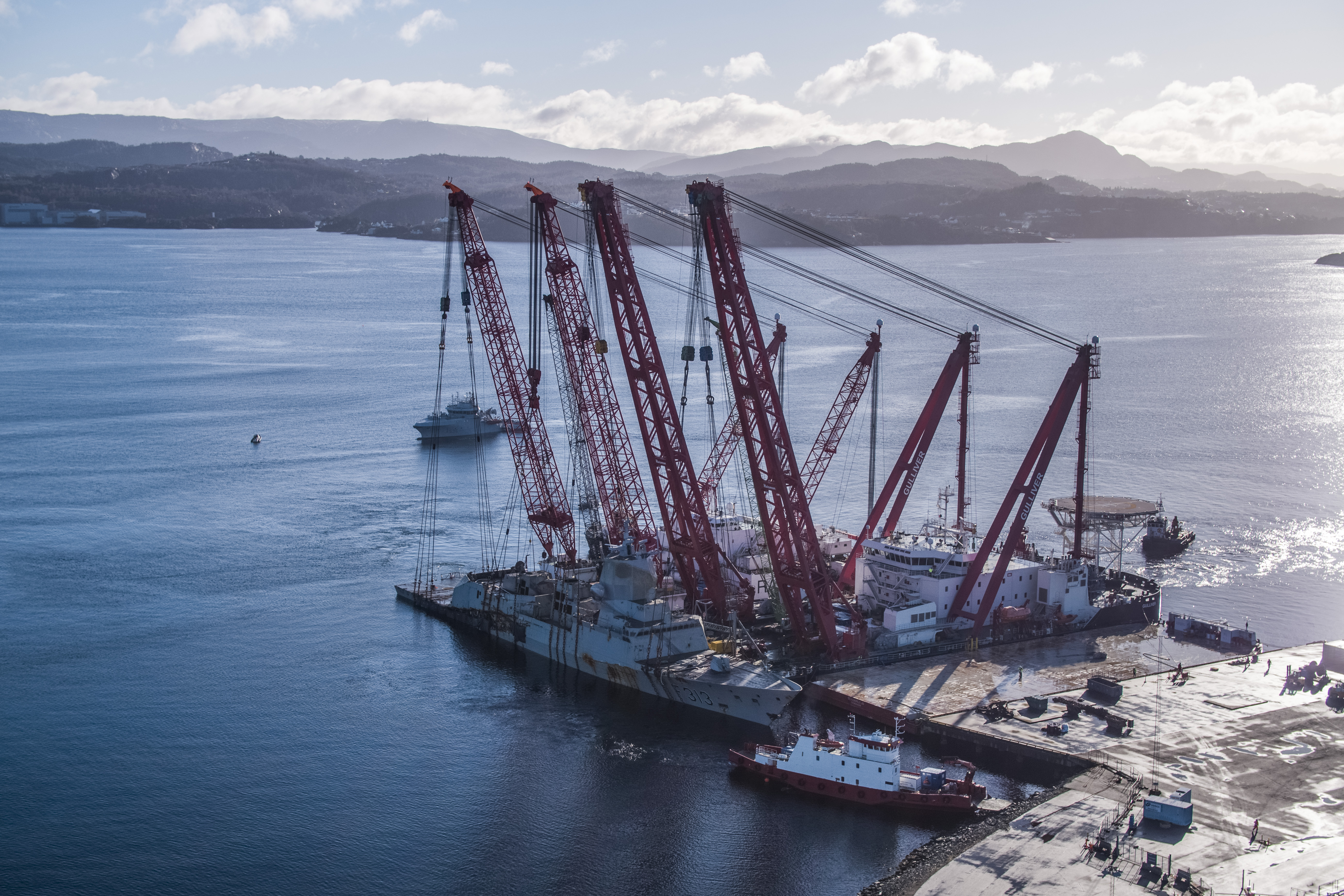
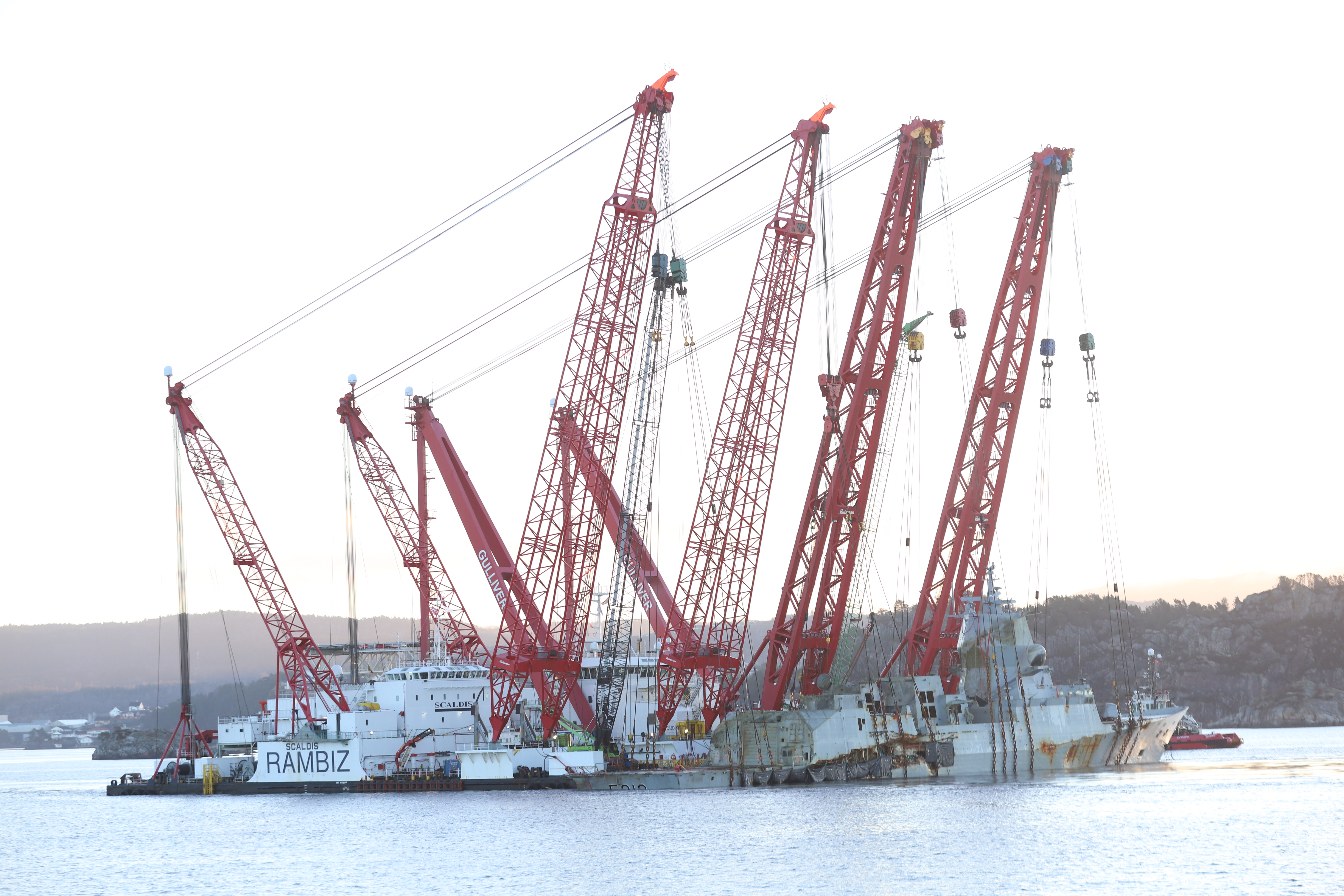
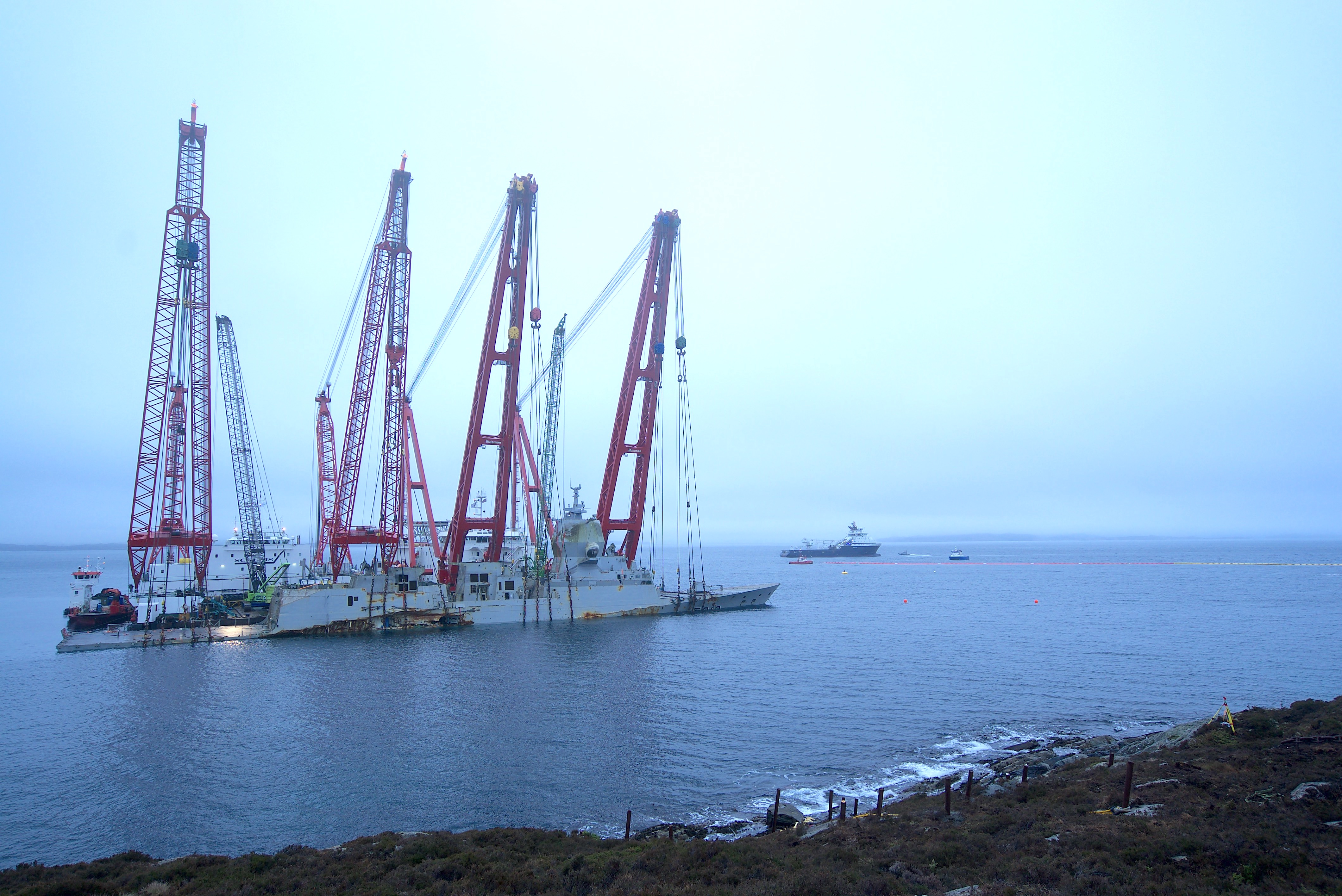
PHOTO’S: SCALDIS
You just read one of our premium articles free of charge
Register now to keep reading premium articles.


